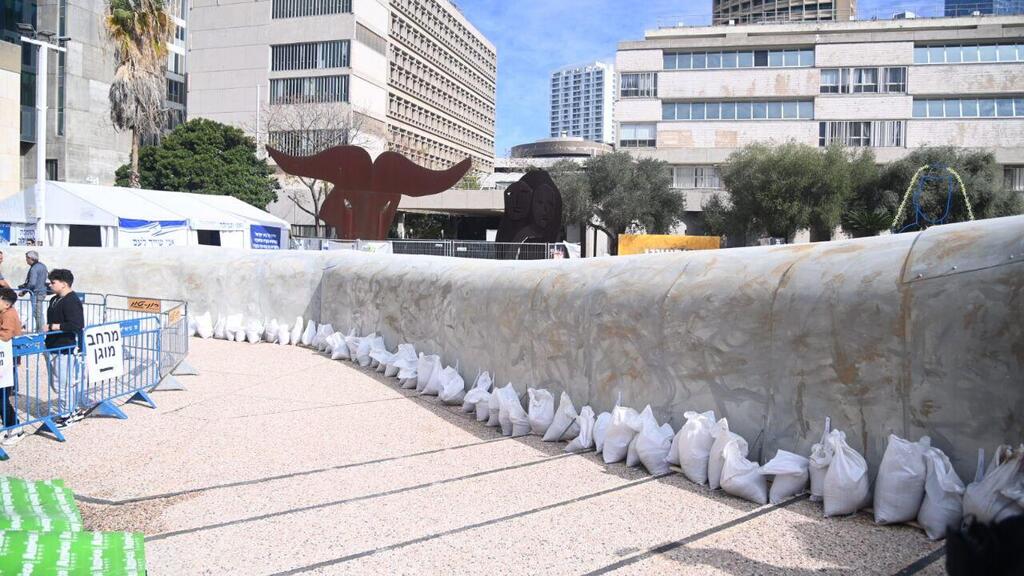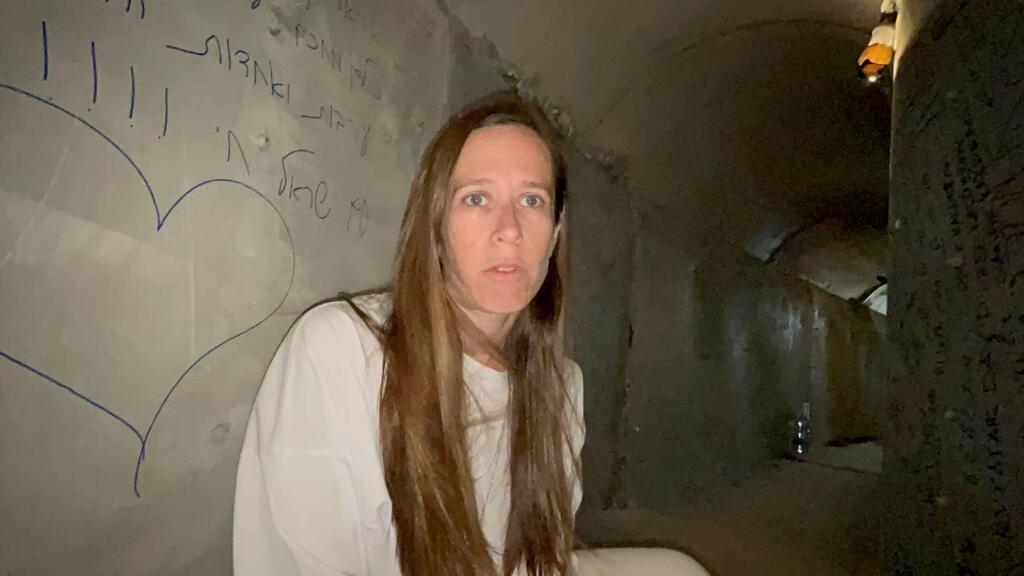Members of the family of hostages held captive in Gaza for 100 days entered a tunnel set up in an exhibit in Tel Aviv to experience the difficulty of confinement underground, that their loved ones have been subjected to since their abduction on October 7.
Read more:
A 30-meter (98-foot) long tunnel was built and placed at the Hostages Square in Tel Aviv on Saturday, to illustrate the conditions in which the 136 remaining Israeli captives held by Hamas in Gaza are believed to be living. The tunnel was opened to the public as part of the events marking 100 days since the hostages were taken by the attacking Hamas terrorists during their massacre. In the sky above the square, a sign signifying the call for their release appeared.
Eyal Mor and Meirav Mor-Raviv whose uncle Avraham Munder, 79 years old, is still held hostage after his wife Ruth and grandson Ohad were freed, said they know how bad conditions are in the tunnels. There is no air, its terribly humid, people are made to sleep on mattress on the floor. For the past 50 days, we have no idea what's happened there," they said.
Ella Ben Ami whose father Ohad, 55, is held hostage said she felt stifled after just five minutes in the exhibit. "I am shaking and shocked," she said. "I don’t want to think what my father and the other 135 hostages are feeling right now. It feels like panic and suffocation.
Inbar Goldstein wrote "Hope dies last," on the tunnel wall. Her brother Nadav used to say that before he was killed with his 20-year-old daughter Yam during the Hamas massacre. Inbar's sister-in-law and her surviving children were released from their captivity.
"There is a sense of loneliness inside," Inbar said. "I think about those held in such conditions, on their own. We walk in and are not alone and still, I feel the loneliness as well as the helplessness. There is real and metaphysical suffocation. I think of these difficult conditions and the rope being tightened as time is running out."
Inbar said we have a responsibility for those still alive, and the dead. "I can barely stand up straight in there and I am not very tall, so I think about the people who live day in and day out like this. It makes no sense.





